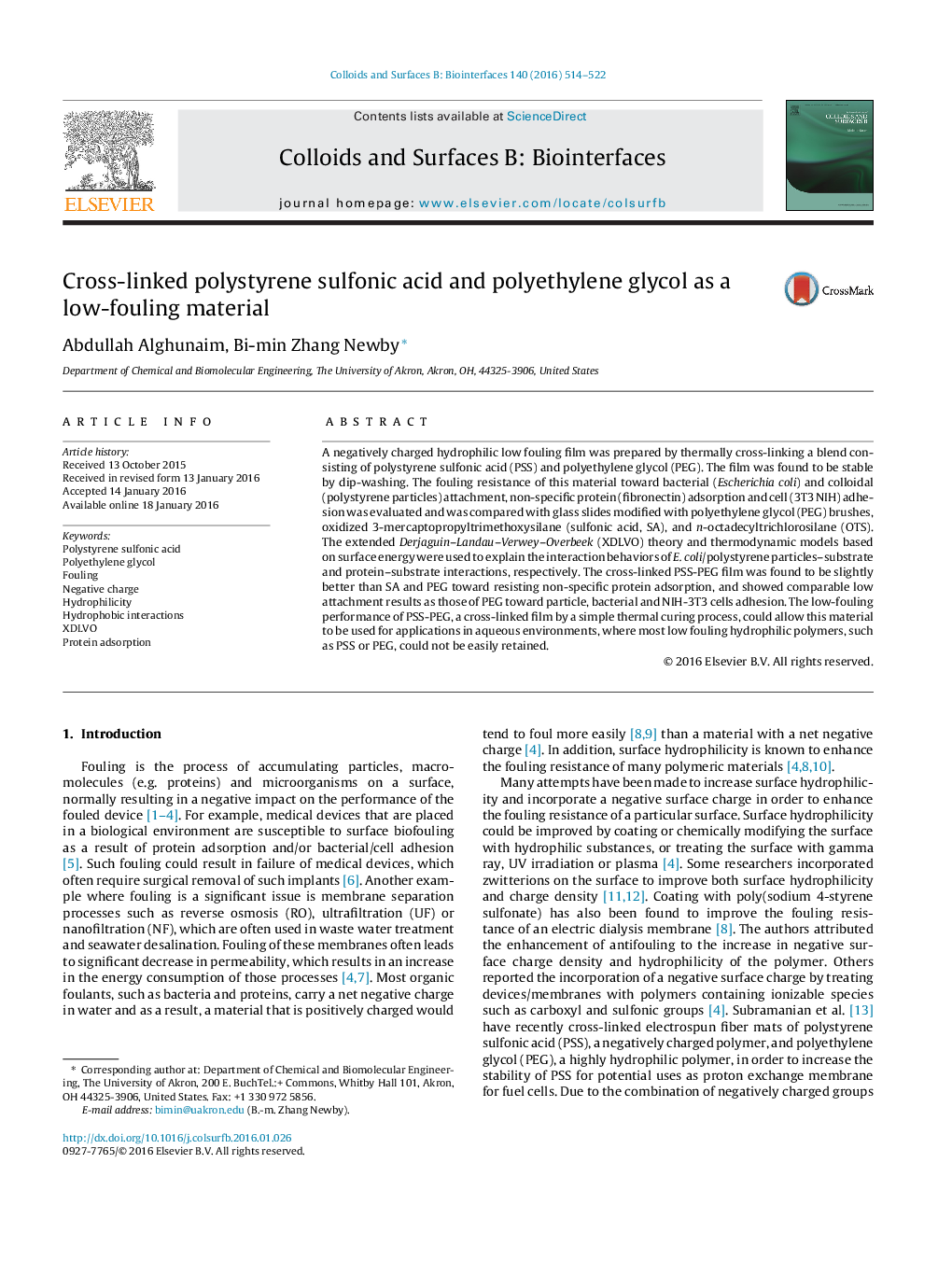| Article ID | Journal | Published Year | Pages | File Type |
|---|---|---|---|---|
| 599142 | Colloids and Surfaces B: Biointerfaces | 2016 | 9 Pages |
•Polystyrene sulfonic acid (PSS) and polyethylene glycol (PEG) were cross-linked.•The cross-linked film exhibited low fouling toward various foulants.•The low fouling was the result of negative charge and hydrophilicity.•The results agreed with the XDLVO and thermodynamics predictions.
A negatively charged hydrophilic low fouling film was prepared by thermally cross-linking a blend consisting of polystyrene sulfonic acid (PSS) and polyethylene glycol (PEG). The film was found to be stable by dip-washing. The fouling resistance of this material toward bacterial (Escherichia coli) and colloidal (polystyrene particles) attachment, non-specific protein (fibronectin) adsorption and cell (3T3 NIH) adhesion was evaluated and was compared with glass slides modified with polyethylene glycol (PEG) brushes, oxidized 3-mercaptopropyltrimethoxysilane (sulfonic acid, SA), and n-octadecyltrichlorosilane (OTS). The extended Derjaguin–Landau–Verwey–Overbeek (XDLVO) theory and thermodynamic models based on surface energy were used to explain the interaction behaviors of E. coli/polystyrene particles–substrate and protein–substrate interactions, respectively. The cross-linked PSS-PEG film was found to be slightly better than SA and PEG toward resisting non-specific protein adsorption, and showed comparable low attachment results as those of PEG toward particle, bacterial and NIH-3T3 cells adhesion. The low-fouling performance of PSS-PEG, a cross-linked film by a simple thermal curing process, could allow this material to be used for applications in aqueous environments, where most low fouling hydrophilic polymers, such as PSS or PEG, could not be easily retained.
Graphical abstractFigure optionsDownload full-size imageDownload as PowerPoint slide
